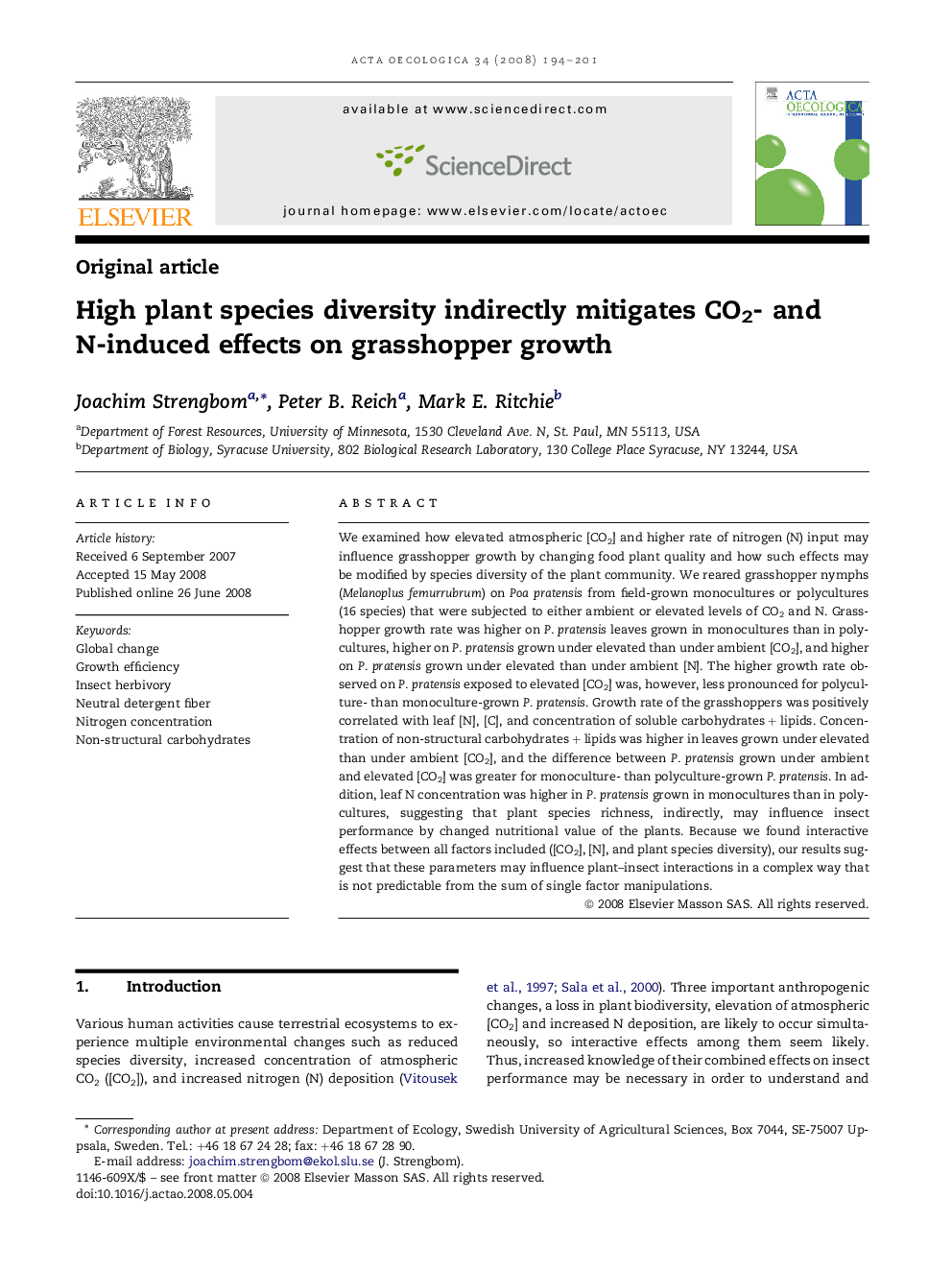| Article ID | Journal | Published Year | Pages | File Type |
|---|---|---|---|---|
| 4381523 | Acta Oecologica | 2008 | 8 Pages |
We examined how elevated atmospheric [CO2] and higher rate of nitrogen (N) input may influence grasshopper growth by changing food plant quality and how such effects may be modified by species diversity of the plant community. We reared grasshopper nymphs (Melanoplus femurrubrum) on Poa pratensis from field-grown monocultures or polycultures (16 species) that were subjected to either ambient or elevated levels of CO2 and N. Grasshopper growth rate was higher on P. pratensis leaves grown in monocultures than in polycultures, higher on P. pratensis grown under elevated than under ambient [CO2], and higher on P. pratensis grown under elevated than under ambient [N]. The higher growth rate observed on P. pratensis exposed to elevated [CO2] was, however, less pronounced for polyculture- than monoculture-grown P. pratensis. Growth rate of the grasshoppers was positively correlated with leaf [N], [C], and concentration of soluble carbohydrates + lipids. Concentration of non-structural carbohydrates + lipids was higher in leaves grown under elevated than under ambient [CO2], and the difference between P. pratensis grown under ambient and elevated [CO2] was greater for monoculture- than polyculture-grown P. pratensis. In addition, leaf N concentration was higher in P. pratensis grown in monocultures than in polycultures, suggesting that plant species richness, indirectly, may influence insect performance by changed nutritional value of the plants. Because we found interactive effects between all factors included ([CO2], [N], and plant species diversity), our results suggest that these parameters may influence plant–insect interactions in a complex way that is not predictable from the sum of single factor manipulations.
